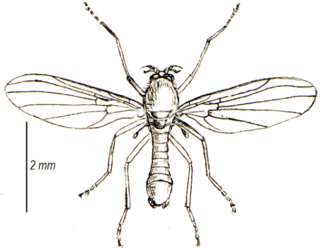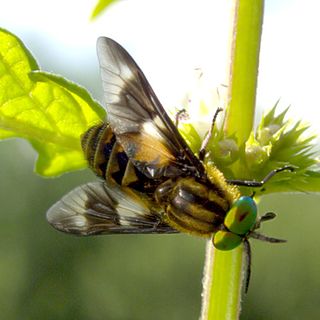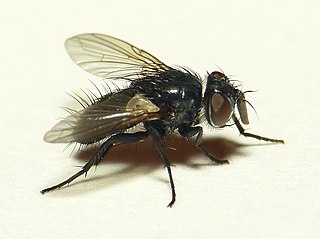
Psychodidae, also called drain flies, sink flies, filter flies, sewer flies, or sewer gnats, is a family of true flies. Some genera have short, hairy bodies and wings, giving them a "furry" moth-like appearance, hence one of their common names, moth flies. Members of the sub-family Phlebotominae, which are hematophagous, may be called sand flies in some countries, although this term is also used for other unrelated flies.

Thaumaleidae, the solitary midges or trickle midges, are a group of nematoceran flies related to the Ceratopogonidae, Chironomidae, and the Simuliidae. They are small, stocky, yellow to brown flies (3–4 mm). Very few species are known for this family. Larvae are found in films on rocks and the nonfeeding adults are usually found on foliage along the same streams in which the larvae are found. A few solitary midges are found in the Southern Hemisphere, but Thaumaleidae are generally an Holarctic family.

The Phlebotominae are a subfamily of the family Psychodidae. In several countries, their common name is sandfly, but that name is also applied to other flies. The Phlebotominae include many genera of blood-feeding (hematophagous) flies, including the primary vectors of leishmaniasis, bartonellosis and pappataci fever.

Superfamily Tabanoidea are insects in the order Diptera.

The Psychodinae are the nominate subfamily of moth flies (Psychodidae), also known as drain flies. Like most of their relatives, they are usually found in damp habitats; some occur in caves. The small larvae are aquatic or semi-terrestrial; the adults are winged and capable of flight. Psychodinae are found worldwide, including some subantarctic islands.

Blondeliini is a tribe of parasitic flies in the family Tachinidae. Larvae are parasitoids of other insects, mostly beetles and caterpillars. Although nearly cosmopolitan, its greatest diversity is in the New World and especially in South America.
Psathyromyia carpenteri was first described as Phlebotomus carpenteri in 1953. The species name is dedicated to Col. Stanley Jennings Carpenter, M.S.C., U.S. Army, under whose direction most of the first described specimens were collected.

Tephritini is a tribe of fruit flies in the family Tephritidae. There are about 80 genera and some 1000 described species in Tephritini.
Evandromyia chacuensis is a species of sand fly first circumscribed in 2018 from specimens collected in Argentina. It is the 12th species currently described in the subgenus Barrettomyia.
Sycorax is a genus of moth flies and sand flies in the family Psychodidae. There are at least 40 described species in Sycorax.
Feuerborniella is a genus of flies belonging to the family Psychodidae.

Philosepedon is a genus of flies belonging to the family Psychodidae.
Peripsychoda is a genus of flies belonging to the family Psychodidae.
Paramormia is a genus of flies belonging to the family Psychodidae.
Cephalops is a genus of flies belonging to the family Pipunculidae.

The subfamily Bruchomyiinae contains genera of moth flies in the order Diptera, was originally described by the American entomologist Charles Paul Alexander.
Didicrum is a genus of the family Psychodidae and has a handful of species studied so far. The discovery of this genus in Colombia represents a significant range extension for Didicrum as all previously described species of this genus are distributed in the Australasian region and the southernmost portion of South America.
Eremolobulosa is a genus of drain flies in the subfamily Psychodinae.









